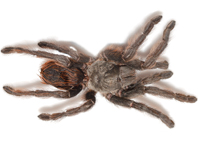Abstract
Neptis reducta Fruhsorfer, 1908 is currently recognized as a nymphalid butterfly found only in Taiwan and Thailand, with previously recorded larval hostplant and immature biology involving mis-identifications. The present study recognizes Aphananthe aspera (Cannabaceae) as the sole larval hostplant for N. reducta, and the nymphalid butterfly is the first known lepidopterous insect specialized on Aphananthe.
References
Ackery, P.R. & Vane-Wright, R.I. (1984) Milkweed Butterflies. British Museum (Natural History), London, vii + 425 pp., 73 pls.
Bascombe, M.J., Johnston, G. & Bascombe, F.S. (1999) The Butterflies of Hong Kong. Academic Press, London, x + 422 pp., 222 pls.
Braby, M.F. (2016) The Complete Field Guide to Butterflies of Australia. 2nd Edition. CSIRO Publishing, Clayton, 384 pp.
https://doi.org/10.1071/9781486301010
Eliot, J.N. (1969) An analysis of the Eurasian and Australian Neptini (Lepidoptera: Nymphalidae. Bulletin of the British Museum (Natural History), Entomology,
15 (Supplement), 3–155.
Eliot, J.N. (1992) The Butterflies of the Malay Peninsula. 4th Revised Edition. The Malayan Nature Society, Kuala Lumpur, x + 595 pp, 69 pls. [originally by Corbet, A.S. & Pendlebury, H.M.]
Fukuda, H., Hama, H., Kuzuya, T., Takahashi, A., Takahashi, M., Tanaka, B., Tanaka, H., Wakabayashi, M. & Watanabe, Y. (1983) The Life Histores of Butterflies in
Japan. Vol. II. Hoikusha, Osaka, 325 pp. [in Japanes]
Fu, L., Xin, Y. & Whittmore, A. (2003) Ulmaceae. In: Wu, Z., Peter, H., Raven, P.H. & Hong, D. (Eds.), Flora of China. Science Press, Beijing & Missouri Botanical Garden, St. Louis, pp. 1–19.
Hamano, E. (1987) Ecological Encyclopedia of Taiwanese Butterflies. Kodansha, Tokyo, 474 pp. [in Japanese]
Hewson, H.J. (1989) Ulmaceae. In: George, A.S. (Ed.), Flora of Australia. Australian Government Publisher Service, Canberra, pp. 1–219.
Hsu, Y.F. (1999) Butterflies of Taiwan. Vol. 1. Phoenix Park, Luku, 344 pp. [in Chinese]
Hsu, Y.F. (2002) Butterflies of Taiwan. Vol. 2. Phoenix Park, Luku, 383 pp. [in Chinese]
Hsu, Y.F. (2013) The Butterflies of Taiwan, Nymphalidae. Morning Star Publishing Inc., Taichung, 381 pp. [in Chinese]
Hung, Y.R. (2008) Families of Butterflies. Self-published, Changhua, 292 pp. [in Chinese]
Igarashi, S. & Fukuda, H. (1997) The Life Histories of Asian Butterflies. Vol. 1. Tokai University Press, Tokyo, 549 pp.
Igarashi, S. & Harada, M. (2015) Sequel to “The Life Histories of Asian Butterflies Vols. I & II”. Self-published, Tokyo, 355 pp.
Kimura, Y., Aoki, T., Yamaguchi, S., Uemura, Y. & Saito, T. (2016) The Butterflies of Thailand Based on Yunosuke Kimura collection. Vol. 3. Nymphalidae. Mokuyosha, Tokyo, 264 pp.
Kobayashi, H. (2011) Notodontidae. In: Kishida, Y. (Ed.), The Standard of Moths in Japan. Vol. II. Gakuen, Tokyo, 115–138.
Lu, C.C. & Chen, C.R. (2014) The Life History of Butterflies in Taiwan. Morning Star Publishing Inc., Taichung, 479 pp. [in Chinese]
Kunte, K. (2000) Butterflies of Peninsula India. Universities Press (India) Limited, Hyderguda, 254 pp.
Powell, J.A. & De Benedictis, J.A. (1995) Biological relationships: Host tree preferences and isolation by pheromones among allopatric and sympatric populations of western Choristoneura. University of California Publications in Entomology, 115, 21–68.
Robinson, G.S., Ackery, P.R., Kitching, I.J., Beccaloni, G.W. & Hernández, L.M. (2010) HOSTS—A Database of the World’s Lepidopteran Hostplants. Natural History Museum, London. Available from: http://www.nhm.ac.uk/hosts (accessed 20 April 2019)
Shirôzu, T. (1960) Butterflies of Formosa in Colour. Hoikusha, Osaka, 481 pp. [in Japanese]
Shirôzu, T. & Ueda, K. (1992) Nymphalidae, Hesperiidae. In: Heppner, J.N. & Inoue, H. (Eds.), Lepidoptera of Taiwan. Vol. 1. Part 2. Checklist. Association for Tropical Lepidoptera, Gainesville, pp. 130–132.
Teshirogi, M. (1990) An Illustrated Book of the Japanese Nymphalidae. Tokai University Press, Tokyo,108 pp.
Teshigori, M. (2016) Nymphalid Butterflies of the World. Hokaido University Press, Sapporo, 541 pp. [in Japanese]
Tolman, T. (1997) Butterflies of Britain and Europe. Harper Collins Publishers, London, 320 pp.
Uchida, H. (1995) Everlasting Island with Beautiful Butterflies—Nature and Man. Self-published, Mumazu, 208 pp. [in Japanese]
Yang, M., Li, D., Wen, J. & Yi, T. (2017) Phylogeny and biogeography of the amphi-Pacific genus Aphananthe. PLoS ONE, 12 (2), e0171405.
https://doi.org/10.1371/journal.pone.0171405
Yang, Y.P. & Lu, S.Y. (2006) Ulmaceae. In: Huang, T.C. (Ed.), Flora of Taiwan. 2nd Edition. Vol. 2. Editorial Committee of the Flora of Taiwan, Taipei, pp. 124–135.

